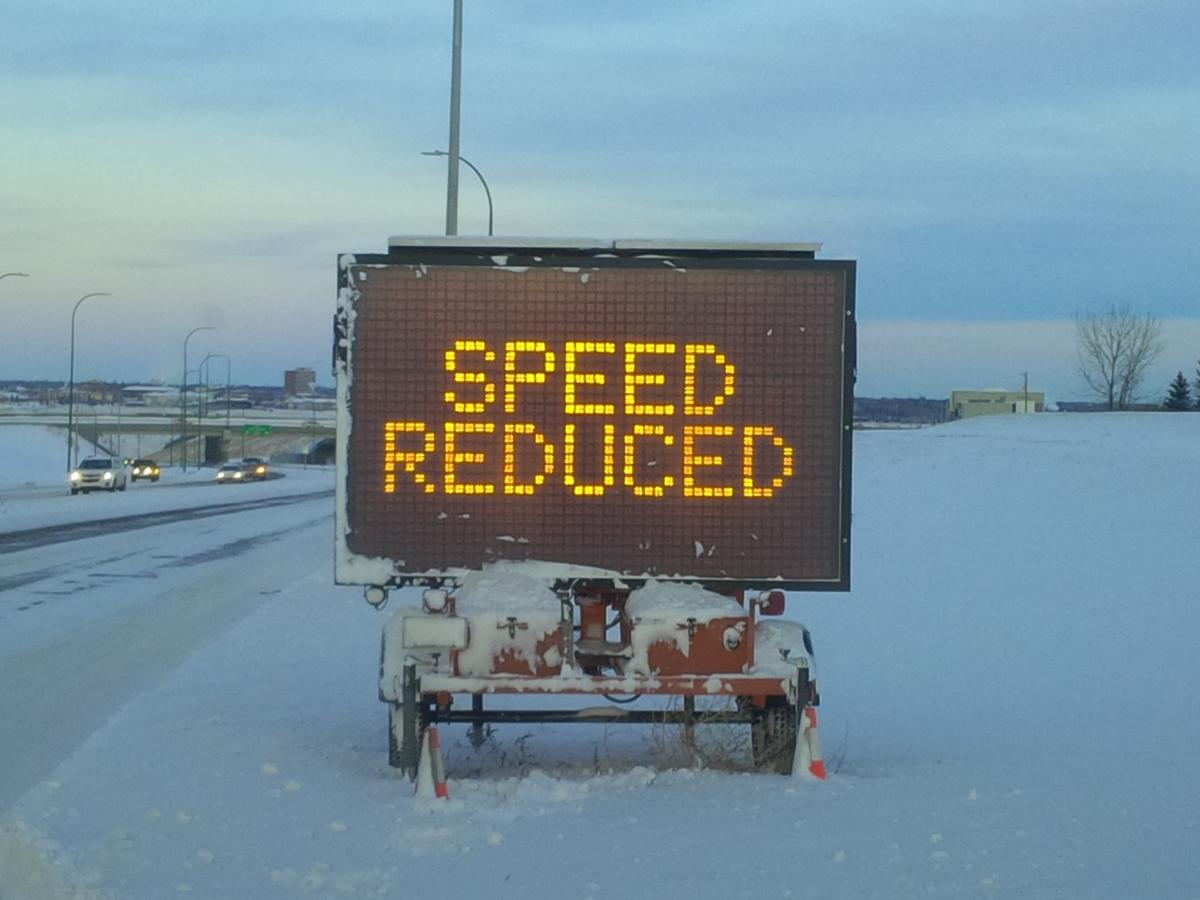Editor’s Note - In this article written for TAC News, Ahmed Ali, Transportation Engineering Manager, Infrastructure Services, City of Lethbridge, writes about implementing a low-cost solution to improve traffic safety in the City of Lethbridge. Prepared on behalf of TAC’s Small Municipalities Task Force, this article is part of a series of feature articles on the issues and challenges affecting smaller communities.
Weather presents considerable challenges to the road infrastructure system, both in terms of safety and operations.
From a safety standpoint, weather reduces pavement friction, thus increasing the potential for collisions when vehicles are traveling too fast for the conditions. Under these circumstances, the posted speed limit at a location may no longer be safe and appropriate. Consequently, new approaches are necessary to influence driver behaviour in regards to speed selection when inclement weather presents a delicate balance of safety and efficient operation. Among these approaches is the use of weather/road surface conditions monitoring systems, variable speed limit signs, and variable message signs.
Variable speed limits (VSLs) are speed limits that change based on road, traffic, and/or weather conditions. VSL is one of the actions identified in the Alberta Road Safety Engineering Toolbox (searchable database of top 77 measures) of the Alberta Transportation report, Methods of Reducing Collisions on Alberta Roads (2010). VSLs have been used to improve traffic safety by restricting speeds during adverse conditions such as a winter storm resulting in poor driving surface conditions. Documented evidence shows that a VSL system can result in a reduction of 45% in all collisions and 20% reduction in injury collisions.
The City of Lethbridge became one of the first municipalities in Canada to implement a VSL on a 3.5 km section of Whoop Up Drive located in the Oldman River Valley. Whoop Up Drive is a 90 km/h roadway facility with slopes of 6-7% and annual average daily traffic of 50,000 vehicles per day. This section of the roadway has experienced a significant number of collisions including multi-vehicle pileups related to snow/weather events. The new VSL system has been in operation since October 2014 and anecdotally has helped in reducing collisions during recent weather events.
The Lethbridge project included researching the hardware and communication options, creating enforcement tools for digital speed limits (traffic bylaw amendment), procurement of equipment, and construction and operation of the VSL system. “We considered several options in the implementation of the VSL system,” said Ahmed Ali, Transportation Engineering Manager at the City of Lethbridge. “The lowest cost option consisted of variable-message board trailers and seven side-mounted speed limit digital signs.”
Permanent power is provided to the VSL signs while the message boards are solar powered. “We also purchased a set of generators to boost batteries of message boards. It seems the message boards are not draining power and we have rarely used the generators. In future, we intend to replace the message boards with permanent side-mounted message boards.”
The selected VSL system consisted of:
Lethbridge’s Traffic Bylaw 5834 was amended on November 24, 2014 to include:
VSLs are invoked using a protocol issued by the City Manager, who is authorized to change the speed limit. A public service announcement and record of speed changes are also required as information for speed enforcement. The City of Lethbridge transportation department worked closely with the Lethbridge Regional Police in the operation of this VSL program.
Data collected at all locations shows that the lowered speed limit signs have yielded excellent results – the 85th percentile speed limit between 60-70 km/h during the speed reduction of 60 km/h. No collisions were reported on Whoop Up Drive during weather events when the speed was reduced.
Information from a road weather information system, which was recently installed on the bridge decks, has proved to be a useful tool in forecasting freezing surface conditions and resulting decisions to lower speed limits.
For additional information and questions, contact Ahmed Ali, Transportation Engineering Manager, Infrastructure Services, City of Lethbridge.